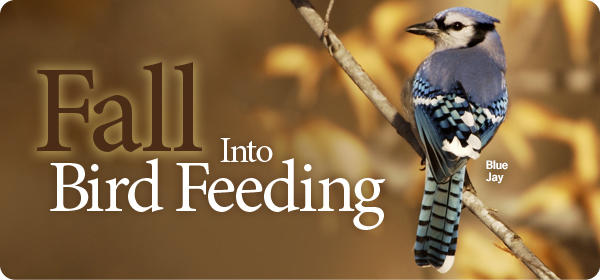
Fall Brings Changes for Your Backyard Birds
As fall arrives, it brings a season of change for us. Summer vacations are over, the school year starts, and the air becomes crisper. At the same time, our backyard birds are going through even greater changes in their lives. They may change the foods they eat, their social arrangements, plumage and even where they live. Most of our backyard birds have been eating protein rich insects in summer and feeding them to their young. In fall, they may change to feeding on the ripening seeds and berries, partly because of the abundance but also because insects are becoming scarce as winter approaches.
As autumn deepens, the activity at your feeders will increase as jays, chickadees, titmice and nuthatches begin caching seeds for the winter by the hundreds. In a behavior called “scatter-hoarding”, each seed is individually hidden in a unique location. Common storage sites include under tree bark, dead leaves, knotholes, and even house siding and shingles.
Most birds also change their social behavior in fall. With breeding over, many abandon individual territories and paired relationships and roam more widely in flocks. Chickadees form small flocks of young and adults that roam over several breeding territories. They will also team up with White-breasted Nuthatches, titmice and Downy Woodpeckers to forage together in a group known as a foraging guild. They all benefit from the teamwork of multiple birds looking in different locations for food…many eyes makes the success rate increase.
In addition, backyard birds undergo a complete molt of their feathers each fall. For some, like cardinals, this is just a replacement of the same colors of feathers they had all year. While other birds change into different colors just for winter, as in the case with male goldfinches which replace their bright yellow feathers with a duller plumage that resembles their female counterparts.
Many birds move to new areas in fall. Sometimes it is just a shift to a nearby location with a better winter food supply, such as your bird feeders. Others, like bluebirds, will move from open areas where they had a nesting cavity to locations rich with berries. Then there are birds such as House Wrens, which leave northern areas and migrate south where they can continue to eat insects through winter.
Fall is a time of tremendous change in the bird world. Take some time this fall to look for and enjoy these changes as you watch your backyard birds at the feeders.

